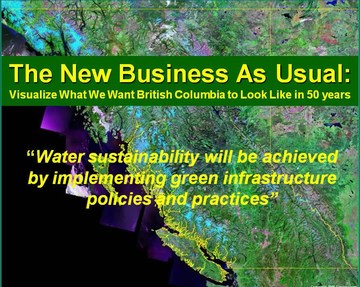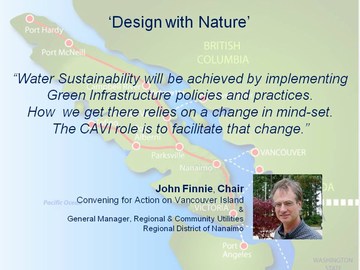Urban Water Sustainability Leadership Conference in Philadelphia: Green Infrastructure as the Centerpiece of the Urban Water World
The Shift to Green Infrastructure
PHILADELPHIA — The Clean Water America Alliance (CWAA) will focus on seven major urban areas during its Urban Water Sustainability Conference at the University of Pennsylvania in Philadelphia on Dec. 6-7, 2010, according to a press release.
Leadership teams from Philadelphia, Washington D.C., Milwaukee, Portland (greater area), San Francisco, New York City and Chicago will share innovations, strategies and best practices for making green infrastructure the centerpiece of the urban water world, the release stated.
Cities are shifting at ambitious scales to green infrastructure – a rapid and thorough exchange of experience is needed. Leaders from the fields of philanthropy, water, sustainability, infrastructure, planning, politics and science will identify the policy and system changes needed for substantive progress toward water sustainability.

A British Columbia Perspective
 “From our British Columbia perspective, it is great to see a significant American conference connect the dots between green infrastructure and water sustainability,” comments Kim Stephens, Executive Director for the Partnership for Water Sustainability in British Columbia, the newly incorporated society that now encompasses the program elements for the Water Sustainability Action Plan for British Columbia.
“From our British Columbia perspective, it is great to see a significant American conference connect the dots between green infrastructure and water sustainability,” comments Kim Stephens, Executive Director for the Partnership for Water Sustainability in British Columbia, the newly incorporated society that now encompasses the program elements for the Water Sustainability Action Plan for British Columbia.
Connecting the Dots
“In British Columbia, our light-bulb moment came in 2006 when we first recognized the need and importance of defining water sustainability as an outcome of green infrastructure policies and practices. This realization flowed from our interviews with a Mayors & Chairs Focus Group that comprised representatives of Okanagan Valley, Metro Vancouver and Vancouver Island local governments,” continues Kim Stephens.
“The same green infrastructure policies and practices are common to both the wet Coast and dry Interior of British Columbia, but target different water sustainability outcomes. On the coast, the emphasis is on reducing drainage runoff to protect aquatic habitat. In the interior, the emphasis is on reducing water use to extend water supplies.”
 “Another way to visualize this is that an absorbent topsoil layer is the interface between rainwater management and drought management. Soil depth creates a sponge…. which can limit runoff during wet-weather periods; and reduce water need during dry-weather periods,” adds Ray Fung, Chair of the Green Infrastructure Partnership.
“Another way to visualize this is that an absorbent topsoil layer is the interface between rainwater management and drought management. Soil depth creates a sponge…. which can limit runoff during wet-weather periods; and reduce water need during dry-weather periods,” adds Ray Fung, Chair of the Green Infrastructure Partnership.
To Learn More:
To download a copy of the agenda for the Philadelphia conference, click on Agenda – Urban Water Sustainability Leadership Conference
Click on Water – Choosing Sustainability for Life and Livelihoods: Convening for Action in British Columbia, released in August 2006 — How to accommodate a doubling of the population in the high growth regions of British Columbia is the driver for implementing changes in the way we develop land and use water. ‘Green infrastructure’ is viewed as an effective means to mitigate environmental and social impacts.
Click on Water Sustainability can be achieved through Green Infrastructure practices, posted in 2007 — Green Infrastructure Partnership promotes ‘design with nature’ approach to land development. Green infrastructure is associated with the management of water that runs off the land. Green infrastructure is also associated with how water is used.
Click on “Topsoil Primer Set” connects the dots between rainwater management and drought management, released in February 2010 — The ‘Law & Policy’ and ‘Technical’ primers are built on the experience the Green Infrastructure Partnership has gained, since 2004, in promoting green infrastructure approaches to development in BC.


